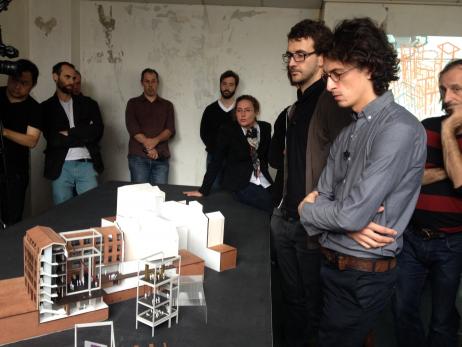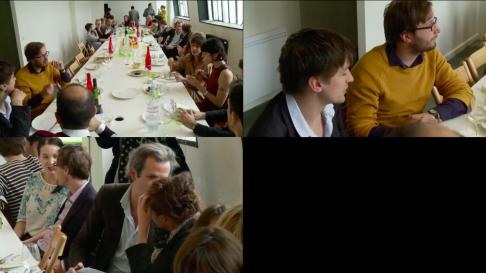
Les Prolégomènes
Symposium from 03 Oct to 04 Oct 2013
11 years and 8 months ago
The question of modernity – its consequences and purpose, its comeback or hesitations – is one which, for many years, has confounded philosophers, art critics and historians. We do not intend to add yet another chapter to the theoretical discussion. Rather, we would like to take stock of the various brands of modernity that coexist today.How are you modern? That is the question we were putting to our guest artists and designers, not so much to get definite answers, but to explore its ramifications in various creative fields, as well as the challenges and issues it raises in this day and age. So what do we mean by “being modern”? In the – rather practical – context of our symposium, “being modern” as an artist or as a designer simply means being current, seeing art as an innovative force that can transform the present. The overarching theme of modernity breaks up into four questions that were addressed in four moderated discussions over the two days of this symposium.In order to document the relationship between the “how” and the “modern”, we wanted to carry out a survey of the creative arts - their places and methods, the aesthetic and political challenges they face. For that purpose, we asked each speaker to submit a creative project that could serve as “food for thought” in one or more of our four workshops.The speaking arrangements made this symposium unique: each participant were asked to present a creative project, in the form of a mock-up, a working assumption, a sketch, a diagram, etc... as a forward-looking medium for examining some of the questions raised in the discussion fora. Participants were selected on the basis of the resonance between the symposium’s theme and their work. Each of them were required to use and develop some of their previous work into a draft project which could help further discussions on one or more of the topics at hand.
Over the course of two days, “Prolégomènes” was an opportunity for participants to get together and think out loud about their projects, according to a sort of predefined “playbook”.“Prolégomènes” is a workshop session with presentations and discussions aimed at exploring the current state of creative arts. It brings together artists, industrial and fashion designers in a cross-disciplinary setting. The objective of the presentations is twofold. Based on current practices and draft projects submitted by the artists at the symposium, we investigated the material and intellectual conditions of contemporary creation, as it relates to technology, knowledge and know-how, aesthetics and politics. Issues were looked at from both a historical and a prospective viewpoint, so as to revisit the past and explore possible future developments, rethink commonalities and differences between practices and disciplines over time, as well as identify new ways for the arts to share and exchange in this day and age.The Rotor collective devised a special system for presenting and reporting the outcomes of this two-day event, whose participants expected to play by the rules of anticipation and creativity.“Prolégomènes also" offered an opportunity to examine what a place like the future Lafayette Anticipations - Fondation d’entreprise Galeries Lafayette, specifically devoted to the creative arts, can produce.
This raises several issues, such as how to fulfill the conditions of contemporary creation in the most appropriate way or as to the nature of the objects produced by contemporary artists.No creation can happen in art, fashion or design without production or without objects. These two preconditions, in turn, have a series of implications of a technical, asthetic and political nature. They can only be fully understood through an engagement with artists and their work, no matter how diverse their fields of endeavor, working methods, resources and production tools.As a consequence, artists and designer were encouraged to speak from experience, providing examples from their own practice and artistic work, in their intellectual as well as material dimensions. Furthermore, they were asked to produce objects that may positively contribute to the discussion of these matters.







